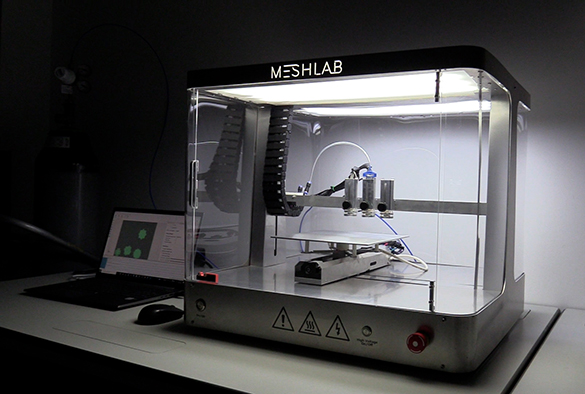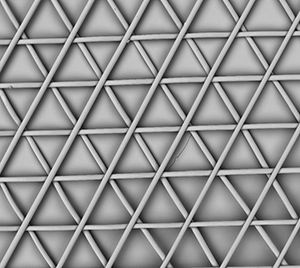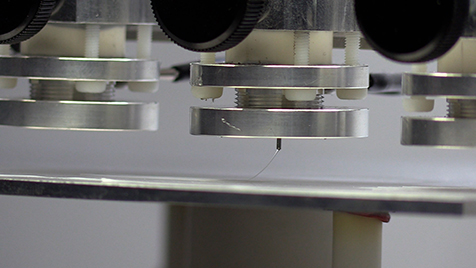Microscale 3D printing technology offers new avenues for Institute research.

An exciting new avenue for research has opened within the Department of Eye and Vision Science following the acquisition of a revolutionary device capable of a process known as melt electrowriting (MEW). This process, similar to 3D printing, allows the construction of 3D structures at incredibly small scales with exceptional detail. These can be used in a range of applications, including the creation of biodegradable polymers that serve as scaffolds for growing cell cultures.
Previously, similar processes could only build from strands hundreds of microns in diameter, whereas MEW technology operates with strands of just 10 microns or less – equivalent to the diameter of a human red blood cell.
One of the most promising potential applications of the technology is the creation of scaffolds that can be implanted in the body. The small size of the scaffolds greatly reduces the chance of the body rejecting them, meaning they can more effectively be used to deliver drug treatments, grow new cells, and allow many other novel treatments.
Dr Lucy Bosworth heads the MEW research group and is leading the way in embracing this novel technology and applying it in broad ranging applications to help researchers investigate new pathways.
Dr Bosworth first heard of the technology as it was being developed by Professor Paul Dalton at the Queensland University of Technology, Australia. In 2021, Lucy travelled to Australia to visit the lab, and after being thoroughly convinced by the potential of the technology decided to explore the possibility of bringing MEW home to the University of Liverpool. Lucy presented the new technology to UK charity and funder Sight Research UK, who were so keen to explore the opportunity MEW could deliver in eye research, they launched a fundraising campaign which delivered the funds needed to purchase the device.
Now just one of a handful of the devices in the UK, ILCAMS has the rare opportunity to utilise the MEW within Dr Bosworth’s newly established MEWLab team.
Lucy will lead the MEWLab, which will include early career researchers Devon Crouch and Jessica Hollett, as they explore the potential applications of this technology, what questions it can help answer, and what fascinating new opportunities it could offer.
Dr Bosworth said of the MEWLab: “I am thrilled to have acquired the state-of-the-art melt electrowriting equipment and assembled a team of bright and enthusiastic scientists. Together, we are poised to advance our understanding of this cutting-edge bio-fabrication technique, exploring the possibilities of constructing precision scaffolds to facilitate the regeneration of diseased tissues, such as in the eye. My gratitude goes to Sight Research UK, whose fundraising efforts made it possible for me to assemble this bespoke kit.”

